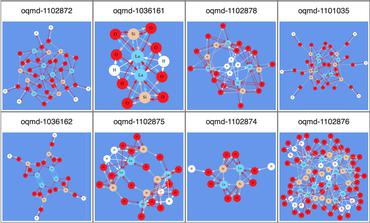Formation Energy
29 papers with code • 14 benchmarks • 8 datasets
On the QM9 dataset the numbers reported in the table are the mean absolute error in eV on the target variable U0 divided by U0's chemical accuracy, which is equal to 0.043.
Libraries
Use these libraries to find Formation Energy models and implementationsMost implemented papers
Neural Message Passing for Quantum Chemistry
Supervised learning on molecules has incredible potential to be useful in chemistry, drug discovery, and materials science.
PhysNet: A Neural Network for Predicting Energies, Forces, Dipole Moments and Partial Charges
Further, two new datasets are generated in order to probe the performance of ML models for describing chemical reactions, long-range interactions, and condensed phase systems.
SchNet: A continuous-filter convolutional neural network for modeling quantum interactions
Deep learning has the potential to revolutionize quantum chemistry as it is ideally suited to learn representations for structured data and speed up the exploration of chemical space.
SchNet - a deep learning architecture for molecules and materials
Deep learning has led to a paradigm shift in artificial intelligence, including web, text and image search, speech recognition, as well as bioinformatics, with growing impact in chemical physics.
Neural Message Passing with Edge Updates for Predicting Properties of Molecules and Materials
Neural message passing on molecular graphs is one of the most promising methods for predicting formation energy and other properties of molecules and materials.
Directional Message Passing for Molecular Graphs
Each message is associated with a direction in coordinate space.
Crystal Graph Convolutional Neural Networks for an Accurate and Interpretable Prediction of Material Properties
The use of machine learning methods for accelerating the design of crystalline materials usually requires manually constructed feature vectors or complex transformation of atom coordinates to input the crystal structure, which either constrains the model to certain crystal types or makes it difficult to provide chemical insights.
Graph Networks as a Universal Machine Learning Framework for Molecules and Crystals
Similarly, we show that MEGNet models trained on $\sim 60, 000$ crystals in the Materials Project substantially outperform prior ML models in the prediction of the formation energies, band gaps and elastic moduli of crystals, achieving better than DFT accuracy over a much larger data set.
Materials property prediction using symmetry-labeled graphs as atomic-position independent descriptors
The possibilities for prediction in a realistic computational screening setting is investigated on a dataset of 5976 ABSe$_3$ selenides with very limited overlap with the OQMD training set.
Molecular Mechanics-Driven Graph Neural Network with Multiplex Graph for Molecular Structures
The prediction of physicochemical properties from molecular structures is a crucial task for artificial intelligence aided molecular design.














 Materials Project
Materials Project
 MD17
MD17
 QM9
QM9
 OQMD v1.2
OQMD v1.2
 OQM9HK
OQM9HK
 WBM
WBM
